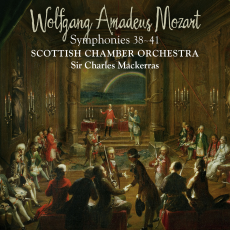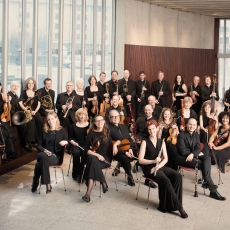Mozart Symphonies - SCO & Sir Charles Mackerras - Audiophilia.com
In retrospect, it's easy to see how the stars aligned for this release; the Scottish Chamber Orchestra, fresh from a string of acclaimed recordings for Linn, tackling these cornerstones of the classical oeuvre under the baton of evergreen arch-Mozartian Sir Charles Mackerras (whose energy, even in his mid-eighties, shows no sign of abating). Assuming the recording engineers could capture it (and Linn's stellar pairing of James Mallinson and Philip Hobbs are hardly novices), the result was always likely to be special. Indeed, such have been the praise and awards already lavished on this release that the only question needing to be addressed here is not "is it any good?", but "is it as good as everyone's saying?" Pray, read on ...
I admit without compunction to being a big fan of releases like this, specifically because they offer newcomers to classical music the chance to easily acquire solid chunks of the standard repertoire - "all thriller and no filler", if you like. Those of us who already own several versions of these vaunted works will be looking for something else; a performance and interpretation uniquely and compellingly different from its predecessors. The lulls during the opening bars of No. 38 establish just that; the clear audibility of Mackerras' breathing evidencing a recorded perspective so close that you almost feel you're sharing the podium! The reduced forces of a chamber orchestra, coupled with the abnormal proximity of the microphones, have a number of crucial consequences. The wash of violins that typically dominates the output of a full orchestra is replaced here by a more balanced, democratic contribution from each section - the commonly held belief that woodwind players are only there to occupy the empty seats between the strings* is banished, their pivotal role in illuminating the colour and texture of these works made deliciously and strikingly obvious throughout.
Close miking restores the full dynamic range (sample the closing bars of the Jupiter, if you doubt that), this power accompanied by a startling sense of agility. It also subdues the contribution of the hall acoustic, endowing to the sound a crystal clarity; combined with a soundstage large enough to allow each instrument to occupy its own space, the grand structure of the music is laid bare before the listener, an aural dissection that I found uniquely insightful and revealing of the composer's intentions.
For all its novelty, there's something instinctively convincing and satisfying in this presentation of such familiar works. Neal Zaslaw, in his liner notes, makes the observation that the reduced instrumental forces here employed resemble more closely those of a symphony orchestra in Mozart's day, while the smaller venues of that era inevitably placed the audience much closer to the musicians than is now the case. This offers a badge of ‘authenticity' to the compelling evidence of our ears, and I heartily endorse his view that this recording restores "the intimacy, nuance and transparency we imagine that Mozart's audiences enjoyed". In truth, the only time I missed the sheer grunt of a modern orchestra was in the opening bars of No. 41, which felt a little less titanic than usual.
The performance itself is characterised by an intensity and sheer vitality that I find almost transcendentally immersive; once playing, it is almost impossible to turn off! These works burst to life in a profusion of colour and energy, leaving the other versions I own sounding dry, dusty and overly-reverential. It's tempting to see this as a direct consequence of Sir Charles' background in opera, and his own liner notes do indeed address the operatic and dramatic allusions in these mature compositions.
While never short-changing their sorrow and gravity, these performances celebrate the ultimate triumph of beauty and joy that, for me, lies always at the heart of Mozart's music. My personal feeling is that the final movement of each Symphony, excepting No. 41, is taken at too quick a tempo. Comparing timings with my other recordings proved generally inconclusive, revealing marked differences in the observation of repeats (Mackerras takes them all), though they match almost to the second those of the English Classical Players' 1990 recording of No. 40 (also on Linn, and a far less compelling experience than is offered here). The Prague's closing Presto is, though, significantly quicker than Abbado's recent performance with the Orchestra Mozart on DG.
I own a fair few Linn discs of varying vintage and, while most are very well recorded, some have struck me as slightly hard or brittle-sounding, and over-ripe in the bass. That is certainly not the case here; assuming you appreciate the close perspective, this recording is simply spectacular, offering supreme clarity and transparency, fabulous soundstaging and a rich, natural tonality utterly devoid of brightness (all from the CD layer ... one can barely imagine what wonders might dwell within the DSD datastream!). The performance is spellbinding - characterful, colourful and distinctly different in balance and dynamics than any other I have heard. It is offered as a download, at various resolutions from MP3 to 24/88.2, or as a beautifully packaged pair of hybrid multi-channel SACDs, the cardboard gatefold sleeve resplendent with details from Unterberger's painting of Mozart's Viennese Masonic Lodge (its fame derived from being one of the very few contemporary records of his likeness, rather than a comment on its artistic merit). Releases as unreservedly recommendable as this come along but rarely - just buy it!
(* a crude joke at the expense of our esteemed editor, a professional flutist, for which I offer apologies if not repentance!)

